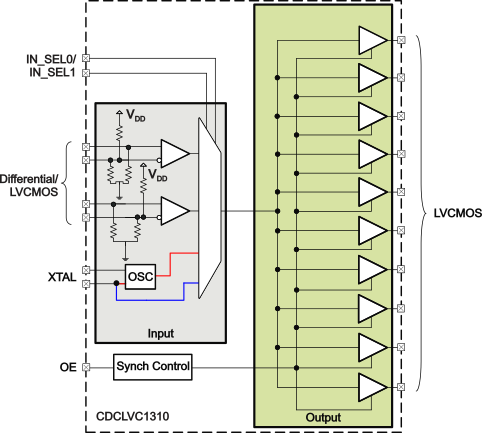Hi team,
I have a question about the bypass mode for the crystal-oscillator input.
If I set the input clock select pin to 11, it means I choose the XTAL bypass mode.
So it means I can connect a 50MHz crystal-oscillator directly to the XIN pin and XOUT pin without the C1, C2 and R. Is it correct?
Another question, when is recommended to select the bypass mode?
Thanks a lot!
Lacey


